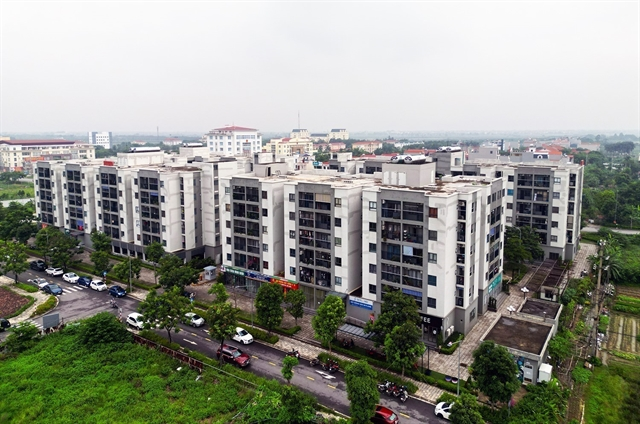A central focus of the draft is on improving the management and operational mechanisms of the Land Development Fund, especially concerning the use of idle capital.

HÀ NỘI — The Ministry of Finance (MoF) is seeking public feedback on a draft decree which revises provisions on land use and land rental fees and regulating the Land Development Fund. The draft outlines several significant proposals aimed at improving capital management, controlling operational expenses and ensuring greater transparency, consistency and financial discipline within the fund.
These amendments are intended to address practical issues encountered during the implementation of existing regulations, while also aligning the legal framework with the Government’s broader goals of streamlining the State apparatus and establishing a more efficient two-tier government system.
A central focus of the draft amendments to Decree No. 103/2024/NĐ-CP and Decree No. 104/2024/NĐ-CP is on improving the management and operational mechanisms of the Land Development Fund, especially concerning the use of idle capital. One notable proposal allows the fund to invest temporarily idle capital to generate returns, in line with its foundational principle of capital preservation and development. This principle, enshrined in both the 2024 Land Law and Decree No. 104/2024/NĐ-CP, serves as a guiding standard for the Fund’s activities.
Currently, idle capital from the State Treasury may be placed in term deposits at commercial banks. The draft adopts a similar approach, stating that during periods when capital is not actively deployed, the fund’s charter capital may be deposited in State-controlled commercial banks operating within the locality. These deposit activities must be regulated clearly in the Fund’s charter, conducted safely and efficiently, and must not interfere with the Fund’s primary functions.
Another key amendment involves a new approach to calculating capital advance management costs.
Under current regulations, these costs are based on the interest rate applied to Vietnamese đồng deposits held by the State Treasury at the SBV. However, experience in implementation suggests that a clearer and more consistent method is needed. The draft proposes that the cost be fixed at the rate effective at the time the initial capital advance decision is issued for a given project or task. This rate would apply throughout the entire funding process and be calculated based on the total amount advanced.
To introduce flexibility, the draft also allows local governments to adjust these rates below the general ceiling, depending on their specific circumstances. This is particularly relevant for projects involving land clearance and compensation. Such flexibility remains consistent with the fund’s non-profit orientation and its overarching goal of safeguarding and growing its capital.
Accordingly, the draft stipulates that the applicable management cost must not exceed a specified benchmark interest rate, which remains open to further input. Provincial people’s committees will have the authority to determine suitable rates, which must be reflected in their operational charter.
For cases where the fund operates under an entrusted management model, the draft proposes clearer definitions of allowable expenditures. Currently, all income under this model is considered to be management fees, which essentially eliminates any revenue-expenditure differential.
To improve financial accountability, the draft distinguishes three categories of permitted expenditures under this model: management fees for entrusted fund administration, allowances and other expenses for board members and executive staff, and payments to the State budget or other lawful expenditures.
The draft also proposes setting maximum thresholds for each type of expenditure. Allowances and executive costs would be capped at 20 per cent of the fund’s income, while State contributions and other expenses would be limited to 15 per cent. Management fees for entrusted administration would not exceed 50 per cent of total revenue. These limitations are designed to ensure that the fund maintains a healthy financial balance and adheres to its principle of capital preservation. — VNS





